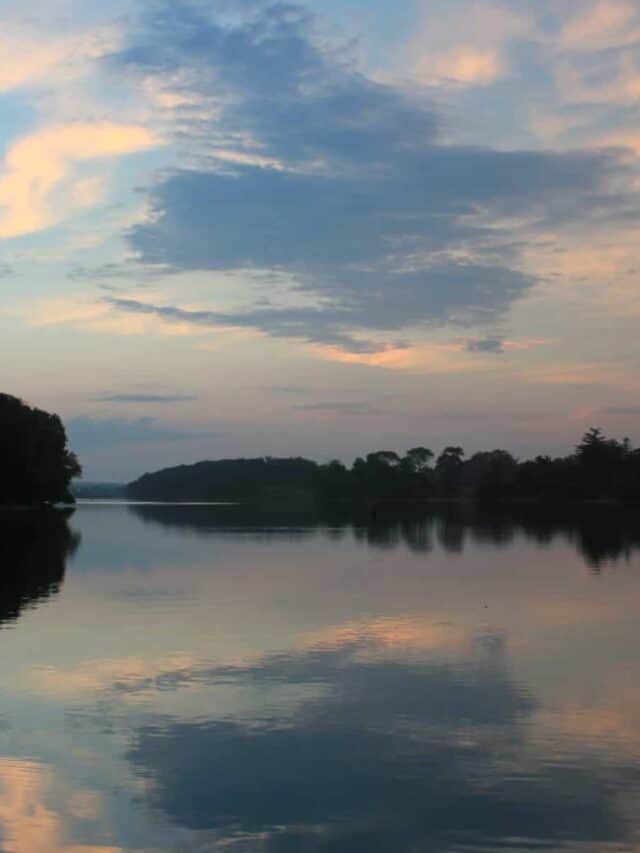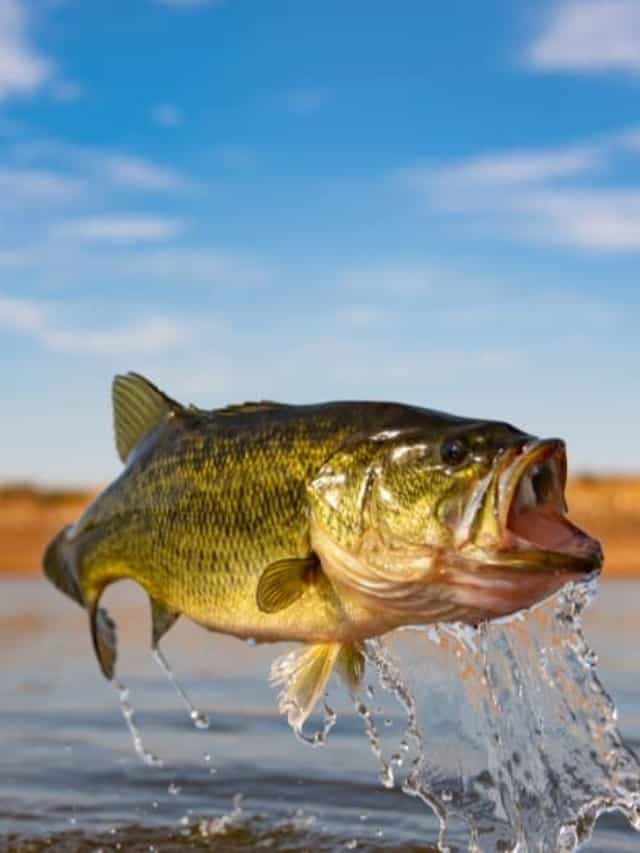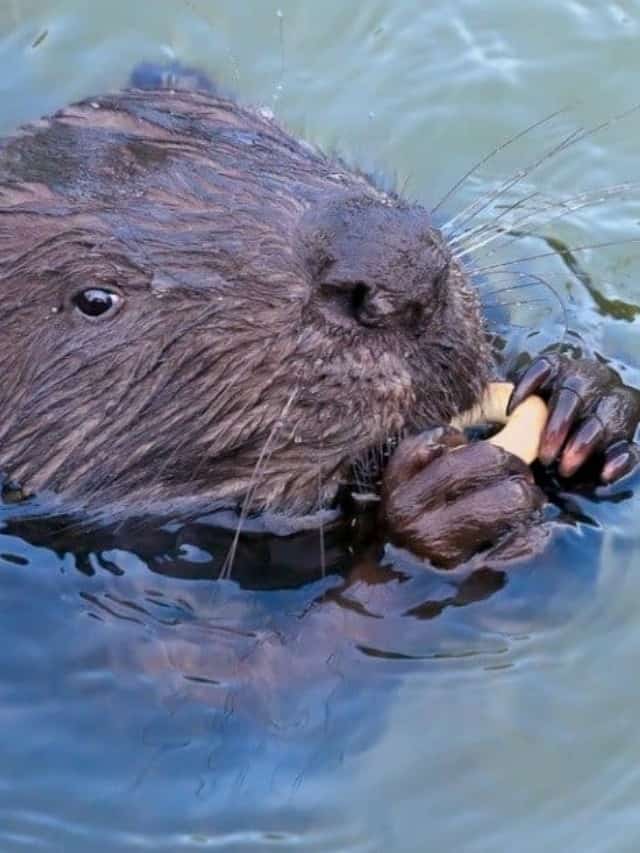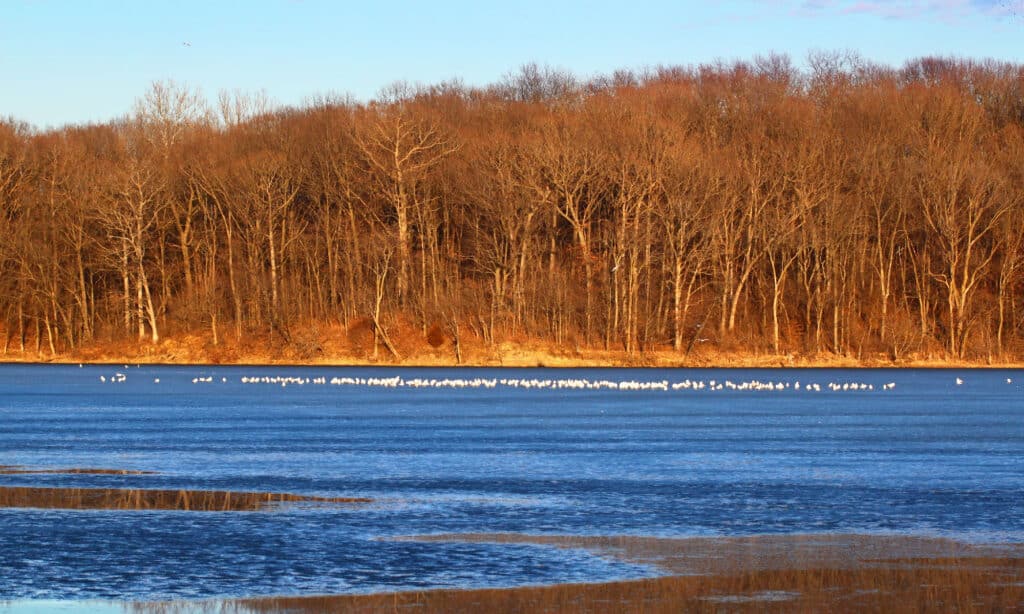The Illinois River is a significant waterway in the central United States, running approximately 273 miles long from its origins at the confluence of the Des Plaines and Kankakee Rivers to its endpoint, where it meets with the Mississippi River. The river basin covers an area spanning over 28,000 square miles, including portions of Wisconsin, Indiana, and Illinois.
In modern times, the Illinois River has become a vital transportation route for barge traffic carrying goods like agricultural products. It also serves as a primary source of drinking water for communities along its banks. However, despite these practical uses, the river plays an equally important role in supporting diverse wildlife populations. The Illinois River is also a crucial part of the Great Loop system of waterways.
Location
The Illinois River is a significant waterway in the United States that flows through the Midwestern region. It originates from the confluence of Des Plaines and Kankakee rivers near Channahon, Illinois, and runs for about 273 miles before merging with the Mississippi River at Grafton, Illinois.
The river stretches across various counties such as LaSalle, Peoria, Fulton, Mason, and more in Illinois before entering Missouri. The location of this renowned river also has an impact on its wildlife.
On a map, you can easily spot the course of this beautiful river running parallel to Route 66. Additionally, there are many parks along its banks where visitors can enjoy activities like camping or hiking while enjoying stunning views of nature at its finest.
Size
The Illinois River, a majestic and vital waterway in the Midwest region of the United States, stretches for an impressive 273 miles. This mighty river is not only long but also boasts a substantial drainage basin that spans over 28,756 square miles. The vast expanse of land that feeds into the Illinois River includes various ecosystems such as forests, wetlands, and prairies. These diverse habitats provide crucial support to numerous plant and animal species found within the river’s watershed.
The size of the Illinois River’s drainage basin plays a significant role in shaping its unique ecological characteristics. The large area allows for ample rainfall and snowmelt to feed into its many tributaries throughout each year. Consequently, this provides plentiful water resources necessary to sustain aquatic life forms such as fish species like catfish or bass – which are popular among recreational anglers who flock to these waters during peak fishing seasons.
Furthermore, this extensive watershed also helps regulate water quality by filtering out pollutants from runoff originating from agricultural lands or urban areas located nearby. This natural filtration system is essential in maintaining healthy levels of dissolved oxygen required by aquatic organisms living within the river.
Overall, understanding size-related information about rivers like the Illinois River can help us appreciate their complex interconnectedness with surrounding landscapes and highlight why they must be protected for future generations to enjoy their beauty while preserving their ecological integrity.
Depth

The Illinois River travels through several US States.
©sallystap/Shutterstock.com
The Illinois River is a vast body of water that spans several states and provides ample opportunities for wildlife enthusiasts to explore. One of the most fascinating aspects of this river is its depth, which varies depending on location. The deepest point on the river can be found at the Illinois River At Henry, where a gauge measures a depth of 14.92 feet.
To keep track of changes in water levels and other important data along the length of this river, it is monitored from twelve different stations located throughout its course. These stations are equipped with specialized equipment that allows them to measure everything from flow rates to temperature and pH levels.
Of all these gauging stations, perhaps one of the most notable is located near Kerby, where it sits perched at an elevation of 1,202 feet above sea level. This station serves as a critical hub for collecting data about local weather patterns and other environmental factors that can affect life in and around the Illinois River.
History

Peoria Illinois was once the largest trading post and settlement on the Illinois River.
©Henryk Sadura/Shutterstock.com
The Illinois River has a rich history that dates back thousands of years. Native American tribes such as the Illini and Miami used the river for transportation, fishing, and hunting. In fact, the name “Illinois” is derived from an Algonquin word meaning “tribe of superior men.”
In 1673, French explorers Jacques Marquette and Louis Jolliet were the first Europeans to travel down the Illinois River. The French established trading posts along the river in the 18th century, which led to increased settlement.
During the mid-19th century, steamboats became a popular mode of transportation on the Illinois River. These boats transported goods such as grain and lumber from central Illinois to markets in St. Louis and Chicago.
Source
The Illinois River is a significant waterway that serves as an important source of livelihood, recreation, and ecological habitat for countless communities in the United States. The river’s source is located at the confluence of two major rivers – the Kankakee River and the Des Plaines River. This convergence point marks the beginning of a journey that spans over 273 miles before finally flowing into the Mississippi River.
The Kankakee River originates in Indiana before meandering through Illinois, where it merges with its sister river to form the mighty Illinois River. The Des Plaines River has its origins in Wisconsin before flowing southwards to converge with the Kankakee near Channahon, some 55 miles southwest of Chicago.
While each river contributes unique characteristics to this vital tributary system, their union creates a diverse ecosystem that supports an abundance of plant and animal life along its banks. Together they provide critical habitats for numerous species, including fish such as walleyes, catfish, and bass.
Geology
South of Hennepin, the Illinois River follows a route that was once used by the Mississippi. Approximately 300,000 to 132,000 years ago, some geological event blocked the Mississippi and caused it to flow into its current path. When the glaciers melted, the Illinois River took over the same path.
The modern course of the Illinois River was formed in a few days due to the Kankakee Torrent. Approximately 10,000 years ago, a lake similar to one of the modern Great Lakes was created in present-day Indiana as a result of melting ice from the Wisconsin Glacier. This lake filled up and overflowed its boundaries, causing all its water to be released in a very short amount of time. Some scientists believe that the entire volume of water was released in under a week. That is one fast river!
Fish

The Illinois River is home to many types of fish.
©Ryno Botha/Shutterstock.com
The Illinois River is home to a diverse population of fish species, making it an ideal destination for avid anglers and fishing enthusiasts. From catfish to bass, crappie to walleye, the river offers plenty of opportunities for visitors to reel in their catch of the day.
For those looking for prime fishing spots, the downstream pools located below the five separate dams along the Illinois River are especially fruitful. These areas offer calm waters and ample space for casting lines and catching fish.
In addition to its abundant fishing opportunities, the Illinois River is also known for its stunning natural beauty and rich wildlife habitat. Visitors can take in breathtaking views of lush forests, towering bluffs, and expansive wetlands while they cast their lines or explore nearby hiking trails.
Whether you’re an experienced angler or just starting out on your fishing journey, there’s something for everyone at the Illinois River. So grab your gear and head down to one of the many great places along this scenic waterway – you never know what kind of exciting catches await!
- Black Crappie
- Blue Gill
- Brown Bullhead
- Channel Catfish
- Largemouth Bass
- Sauger
- Walleye
- White Bass
- White Crappie
Wildlife

Beavers are common along the Illinois River.
©iStock.com/TatianaMironenko
The Illinois River boasts a rich and diverse ecosystem that supports an abundance of wildlife species, both aquatic and terrestrial. Its waters are home to various types of fish, including the ever-popular catfish and carp. These fish thrive in the river’s nutrient-rich waters, which provide them with ample food sources.
In addition to fish, the Illinois River is also home to several reptiles, such as turtles and snakes. Turtles are commonly sighted basking on logs or rocks along the river banks, while snakes can often be found slithering through nearby woodlands.
Amphibians also play a critical role in the Illinois River’s ecosystem. Frogs and salamanders abound in its wetland areas, where they breed and lay their eggs. These creatures serve as important indicators of water quality since they are highly sensitive to environmental changes.
Mammals like beavers and otters make their homes along the riverbanks, where they build elaborate dams or lodges for protection from predators. Beavers play an essential ecological role by creating wetland habitats that support other wildlife species, such as ducks, geese, muskrats, and even some fish.
Birds are perhaps some of the most iconic creatures found along the Illinois River watershed. The bald eagle is one such bird whose presence has become synonymous with conservation efforts aimed at protecting this majestic raptor species from extinction due to habitat loss or human persecution. Great blue herons are another common sight along these waterways.
Recreational Activities

Clinton Lake is an excellent hunting, camping, and fishing getaway.
©Jason Patrick Ross/Shutterstock.com
There are a variety of recreational activities available for visitors to enjoy on and around the Illinois River. Fishing is a popular pastime, with opportunities to catch several species, such as catfish, bass, and walleye. Boating and kayaking are also common activities, allowing visitors to explore the scenic waterways at their own pace.
For those who prefer land-based activities, hiking trails can be found in many areas surrounding the river. Birdwatching is another popular activity due to the diverse range of avian species that call this region home.
Additionally, there are several campsites and RV parks located along the riverbank which provide a great base for exploring everything this beautiful area has to offer. Whether you’re looking for an adventurous outdoor excursion or simply want to relax by the water’s edge, there’s something here for everyone!
The photo featured at the top of this post is © mattman7474/Shutterstock.com
Thank you for reading! Have some feedback for us? Contact the AZ Animals editorial team.






